The Murasame (there was a class of the same name in the 1990s) were the successor to the Ayanami-class destroyers. They were less specialized in anti-submarine warfare, but more A/AS because of their heavy artillery, and thus they were the first classified unofficially as “DDA” (anti-air destroyer/all purpose destroyer).
They still sported the same typical “long forecastle” design and “Holland Slope”, also adopting the propulsion system from the Harukaze class.
Sensor suite and weapon systems were close to the late Ayanami class, but with three 5-inch/54 cal. Mark 16 guns with Mark 39 single mounts to deal with A/AS threats plus four 3-inch/50 Mark 22 with Mark 33 dual mounts controlled respectively by Mark 57 GFCS and Mark 63 controllers.
They also used a Japanese-made radar, the OPS-1, developed from the AN/SPS-6. Only three ships were completed of this class, Murasame, Yudachi and Harusame, active until 1987-89.
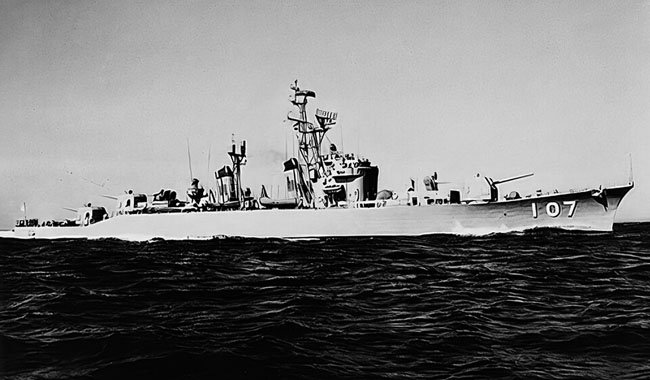
Development of the Murasame class
Genesis: The 1956 Plan and DD
The initial Japanese Guard Force ordered the Harukaze-class in the 1953 plan and resumed domestic construction of destroyers. In order to prioritize the increase of frontline naval assets, extremely insufficient at the time, the next 1954 plan focused on the construction of small for anti-submarine work, no larger vessels were built. This was quantity over numbers. However, after the establishment of the Maritime Self-Defense Force in 1955, construction of larger vessels was resumed with the construction of the 1,700-ton Ayanami-class as part of the 1955 plan. Reflecting knowledge acquired in the planning, design, and construction of the Harukaze-class the hull was enlarged and the design greatly revamped, but in exchange for expanding anti-submarine warfare capabilities. This approach led to compromises for naval artillery. The ship was unofficially referred as ASW escort ships (DDE/DDK) in budgetary planning.
But in parallel, construction of a derivative class was voted for the following year’s 31st year plan (1956). The hull was slightly enlarged to 1,800 tons, anti-aircraft and anti-surface firepower, clear weak points of the 30DDK class (Ayanami), was much strengthened, so the new class was unofficially called anti-aircraft destroyer (31DDA).
F-103 program design differences
As with the preceding Ayanami, the basic design was outsourced from the Ship Design Association of Japa under project number F-103. The basic design for the hull was largely the same as the Ayanami-class (30DDK), with a hull shape retaking the same peculiar “long forecastle type” further characterized by its aft “Dutch slope” down to the stern deck. However, compared to the Ayanami-class, the hull waterline length was shortened by a meter, beam increased by 0.3 meters to ensure stability and improve manoeuvrability. This was necessary to avoid excess rolling for accurate AA fire.
Standard displacement was increased by 100 tons, but when calculating the added weight of the turrets, it was found not enough to absorb the extra space taken and reinforcements required for the artillery armament. To compensate, their anti-submarine suite was significantly educed. However, the weight of the final armament reached 18% of the standard displacement, making them indeed extremely heavily armed ship. Note that in comparison, the contemporary Forrest Sherman class only had two main guns and displaced 2,800 tons standard and 4,050 tons full load, so 1000 tonnes more.
Another issue of design was that crew was increased by 30% due to artillery adopted, only semi-auto and requiring a lot of operators, plus those in the fire control department. But the crew accommodations of the Ayanami class were still there, there was simply no space left to add all these extra bunks. The warehouse floor area was significantly reduced from 356 square meters to 303 square meters, freeing living quarters. To compensate, sea-going receiving capacity was strengthened.
In addition, the third, Harusame, was ordered under the 1957 plan and improved in many ways. She was designed with better ergonomics to reduce crew fatigue, increase work efficiency compared to the 1956 plan vessels. Considering their aesthetic qualities, fore mast, aft mast, and funnel shapes, all were redesigned from an engineering design perspective, so to make them more appealing. Construction methods were also improved for this third ship, with a block construction method adopted for the first time, a way to experiment with mass construction of escort ships in case of emergency, so possible war with USSR. The Harusame was divided into 27 large semi-autonomous blocks, pre-fitted and joined on the Uraga Dock shipyard.
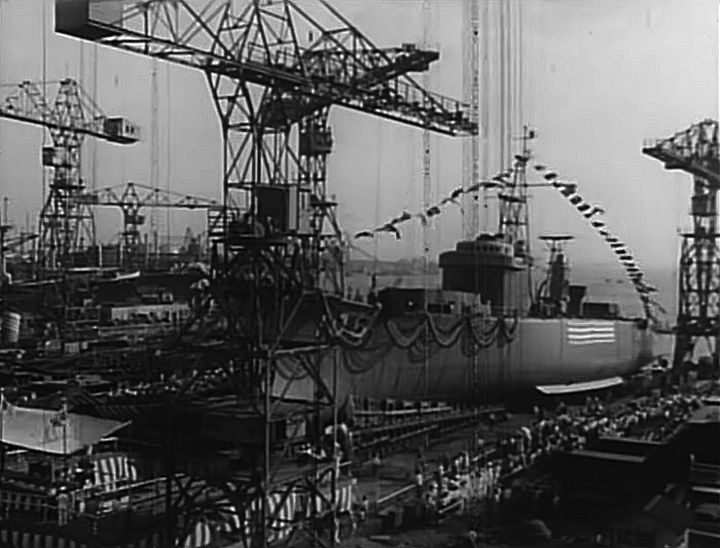
Launch of Yudachi in 1958
Authorized by the diet on 1955-56 they were founded and planned to be laid down on three yards FY1957, FY1957 and FY1958. The yards concered were:
DD107 (ASU7006 1984) むらさめ Murasame at Mitsubishi Zosen, Nagasaki.
DD108, (ASU7007 1984) ゆうだち Yudachi at Ishikawajima HI, Tokyo.
DD109, (ASU7008 1985) るさめ Harusame at Uraga Dock, Yokosuka.
Note like WW2 IJN DDs they were given the above Kanji, painted in white over their grey hulls.
Design of the class
Hull and general design
So, to retake what was said above, the Murasame class were essentially the same hull as the Ayanami in many aspects, but transformed to manage a heavy armament of three 5-in main gun turrets that simply were absent from the previous designs, and engineers had to deploy treasures of ingenuity to place these three turrets with their ammunition stores, and to manage to have the whole crew berthed. The Murasame as seen above were of the same length and general hull shape in details, with the standard long forecastle, Holland slope aft, and a displacement which ws quire light, even below a WW2 Fletcher class. They displaced indeed 1,800 long tons (1,829 t) standard for a length 108.0 m (354 ft 4 in) like the Ayanami but a beam of 11 m (36 ft 1 in) and 3.7 meters in draught on average. Details of the bridge, placement of the raked funnels and masts were very much a repeat of previous designs.
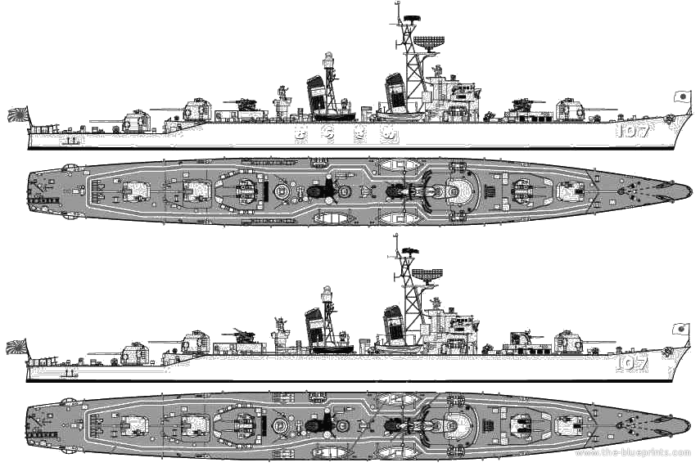
Powerplant
The 30DDK (Ayanami) were set up for a speed of 32 knots based on operational requirements for anti-submarine warfare, but the Murasame were allowed to return to 30 knots, same as the 28DD class (Harukaze). The weight of the engine section had to be reduced to absorb the armament weight increase, and since there was no room for power increase, after more than 20 years of service they were only capable of 29 knots, and could not reach the planned 30 knots.
The boilers were the same as the ones on 28DD and 30DDK, producing a pressure of 30 kgf/cm2 (430 lbf/in2), for a temperature of 400 °C (752 °F). The steam generation rate was 62 tons/hour, same as the 28DD Yukikaze. But in preparation to adopt a pressure of 40 kgf/cm2 (570 lbf/in2) and temperature of 450 °C (842 °F) for future vessel, same as front-line ships in Europe and US, there was a new pressure-sealed water supply system using a deaerator.
The steam turbine were the same as the Ayanami class, three-drum impulse type, with cruise turbines of an automatic retractable type. The engine arrangement was also the same as on the Harukaze, with the forward turbine driving the left shaft and aft engine driving the right one.
They were coupled with two steam turbine main generators rated for 450 kVA (360 kW) plus two diesel main generators rated 125 kVA (100 kW) to make work the ship when the machinery was cold at anchor.
Armament
5-inch/54 calibre Mk.39 guns
The great novelty of the design was to adopt three US-provided 54-cal. 12.7 cm (5 inches) single-barrelled guns (Mk.39) as main guns. They were originally installed on the Midway-class aircraft carriers but removed during modernization in 1955, donated to the Japan Maritime Self-defence Force. Their gun shields were changed to the new standard thin high-tensile steel models to reduce weight. The weight imposed an arrangement with one forward, two aft in super firing position but all far apart. The one on the bow deck was far from the bridge. The ones aft took advantage of the “holland slope” to be positioned in super firing positions without actually be mounted on structures, but directly on deck. The clearance fo “X” turrets however above “Y” turret was really short in direct fire at 0°.
Specs
3-inch/50 caliber Mk.33 guns
In addition to this, a single 50-cal 3-in twin rapid-firing gun (Mk.33) was installed behind the main gun on the foredeck, and another at the rear, super firing over “X” turret. In order to further lower the centre of gravity, the 3-inch guns were omitted their shields, and equipment position was lowered just enough for the horizontal firing field in the fore and aft directors. The first and second ships had a gun shield installed on their forward 3-in guns, however. This was a Japanese one, armoured. This gun was later produced in Japan under licence, installed on 44 JMSDF ships, until those planned in 1974. The associated gun fire control system was the Mk.63, same as for the 40 mm on the Harukaze.
Specs
Hedgehog anti-submarine mortar
The anti-submarine weapons were based on the equipment of the 30DDK, with some reductions. The Ayanami-class was planned to be equipped with American Weapon Alpha and British Skid, new generation rocket artillery, but this was not realized. Instead, the Ayanami-class retained the Mk.15, a swivel-mounted version of the Hedgehog.
A single anti-submarine mortar was the improved Mk.15, using a rotating mechanism, installed forward at the foot of the bridge.
19-in (483 mm) Mark 45 torpedo ASW TTs
The heavy and bulky long torpedo tubes of the previous class were omitted, and the number of depth charges was halved. Still, they carried two tubes for the Mark 45 Torpedo, just put into service in 1958. The tubes were located either side of the bridge on platforms at the end of bulwarks.
They were likely of the Mark 45 Mod at that stage.
These 2,330 lb (1,060 kg) models measured 225 inches (5.72 m) for 19 inches (483 mm) and the original W34 nuclear warhead was replaced hy a conventional one.
They were powered by an electric engine to a range up to 11,000 yards (10 km) at 40 kn (74 km/h), guided by Gyroscope and wire.
Y-gun
The Murasame-class was also equipped with Mk.2 launchers and depth charge projectors (Y-guns), and a single depth charge track. But the number of depth charges carried was reduced from 56 on the Ayanami-class to 18. Two Y-Guns, depth charge throwers capable of 60 to 150 yards (55 to 137 m) in just 3.4 to 5.1 seconds. Aft on deck abaft the deckhouse. Charges were 65 lbs. (29.5 kg) with increasing range, using black powder (settings 60, 90 and 150 yards (55, 82 and 137 m). Probably using the Mark 16. A 435 lbs. (197 kg) model carrying a 295 lbs. (134 kg) Torpex charge with a sink Rate of 31 fps (9.4 mps) and max setting of 2,500 feet (762 m). Mod 0 was hydrostatic and Mod 1 was acoustic.
Uprades
The three main guns appeared soon slow-firing and less than ideal for an efficient AA deterrence. This explains why the class remained in service for an average of 25 years. In 1968, Harusame received a OQA-1 sonar and in 1975, her and Harusame in 1979 would have their two 483mm TT removed, as well as their 2 DCT and one DCR. Instead, two tripled light US 324mm TTs were installed, now standard both on the USN and JSDMF.
Sensors
All radars on board domestically produced. For anti-aircraft search they had the OPS-1, based on the AN/SPS-6 obtained for the previous Harukaze or 28DD class, and then installed for the first time. For surface combat, the Akebono and Ikazuchi-class had also the domestically produced OPS-3, based on the AN/SPS-5.
For sonar, the Ayanami early model was initially installed, an AN/SQS-11 for search, AN/SQR-4 for target bearing, AN/SQA-4 for distance. The suite was later replaced by the SQS-29J (AN/SQS-4 mod.1).
As for electronic detection and communication, the US-made AN/BLR-1 was planned, but delays in loan meant the ships were commissioned without. Like for the Ayanami-class, only Harusame had it from the start. It was retrofitted later on Murasame and Yudachi as well as the domestic variant called the NOLR-1.
OPS-1 or AN/SPS-12
Air search radar developed as a successor to the SR-3/R-6 L Band ASR (air search radar) of WW2. Parabolic antenna using a horn antenna as primary radiation source, modular design for configuration changes. The antenna was 18 ft (5,500 mm) x 5 ft (1,500 mm), fpr a beamwidth of 3° x 10°, but could be detected at 80 nmi (150 km) away.
OPS-3
In other sources, OPS-15. The Japan Maritime Self-Defense Force first acquired the AN/SPS-5B as an onboard radar for its Bluebird-class minesweepers, then replacement for the SG and SL-1 on the Asakaze-class escorts (former Greaves-class) and Kusu-class (former Tacoma-class). The OPS-3 was developed as a copy of the latter and became the first domestically produced surface search radar, by Japan Radio Co., Ltd. Larger than the original, it suffered from heat generation problems and was further developed into the OPS-5, linked to the indicator in the Combat Information Centre (CIC). The use a Xb band (6.4 GHz) but this was the same as for television relay broadcasting, interference became a problem. In 1957, they were upgraded to the C band (5 GHz) and by enlarging the antenna, the performances exceeded the OPS-2.
Mark 57 GFCS (SPG-34)
Fire control for the 5-in/54 Mark 39 main guns. Coupled with the SPG-34 radar.
Mark 63 GFCS (SPG-35)
Fire control for the 3-in/70 Mark 33 main guns. Coupled with the SPG-35 radar.
SQS-11 sonar
The QHB is a scanning sonar developed by the United States Navy under the direction of W. W. Behrens, Jr., and first deployed to the fleet in 1948.
PP 25.5 kHz, AT-354 47.8×60.7, weight 800 lb (360 kg) .
SQS-29 sonar
It was developed with an operating frequency of 14 kHz, an extension of the AN/SQS-10, as the AN/SQS-4 proposed in 1948, tested in 1951, deployed from 1954. Still, a separate sonar was needed for attack, here the SQS-11. Instead, an AN/SQR-8 was used on Amatsukaze and the AN/BQR-2/4 on submarines.
The improved SQS-29 was capable of detecting targets below 2,100 yd (1,900 m).
Active protection
BLR-1 ECM suite
Called the Radio/Radar Interception System (1951/52). No data. Antenna assemblies.
I addition they had the NOLR-1.

⚙ specs. |
|
| Displacement | 1,800 long tons standard |
| Dimensions | 108 x 11 x 3.7 m (354 ft 4 in x 36 ft 1 in x 9 ft 8 in) |
| Propulsion | 2 sets geared steam turbines, 2 boilers, 15,000 hp |
| Speed | 30 kts (56 km/h; 35 mph) |
| Range | 6000 nm/18 kts |
| Armament | 3 x 5-in/54 Mk.16, 4× 3″/50 Mk.22, 2× ASWTR, 1× Hedgehog ASWRL, 2 Y-gun, DCR |
| Sensors | OPS-1 SSR, Mk 57 FCS, Mk 63 FCS |
| Active Protection | NOLR-1 |
| Crew | 220 |
Career of the Murasame class
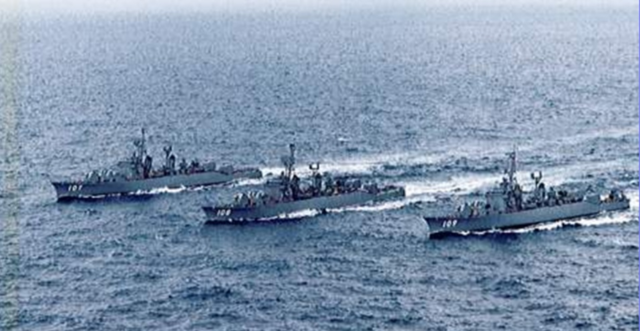
The 10th escort group and all three sisters in the 1970s
In the First Defence Program, there was a plan to build eight more of them, but due to the maintenance budget, they remained at the three decided in the First Defence Program. After commissioning, they were deployed to Maizuru, forming the 10th Escort Squadron. They had limited upgrades in 1968 and 1975-78. Afterwards, they were gradually reclassified as “special ships” from 1984 to 1985. Murasame and Yuudachi were maintained operational, but after the 10th Escort Squadron was disbanded, Harusame was modified as the command ship of the 3rd Escort Group for one year, until it reclassified again as “special ship”. They saw little service, notably due to the adoption of the first SAM equipped frigates and destroyers and were considered obsolete, kept only for bombardment support.
 JDS Murasame DD-107
JDS Murasame DD-107
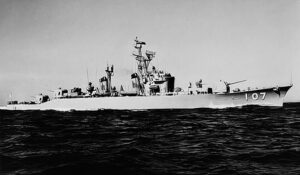 Murasame (DD-107, ASU-7006) was the lead ship of her class, sometimes called “first generation Murasame” as another of the same name was built in the 1990s. She was third Japanese to bear this name, after an Harusame-class and Shiratsuyu-class.
Murasame (DD-107, ASU-7006) was the lead ship of her class, sometimes called “first generation Murasame” as another of the same name was built in the 1990s. She was third Japanese to bear this name, after an Harusame-class and Shiratsuyu-class.
She was laid down on December 17, 1957 at Mitsubishi, Nagasaki as the “1,800-ton patrol ship No. 1608, Showa 31 Plan” and launched on July 31, 1958, commissioned on February 28, 1959, Maizuru District Fleet and from March 25, 1959, in the just created 10th Escort Squadron for her class, with Yudachi commissioned on the same day. They were joined later by Harusame when completed.
On September 25, 1959 her unit passed under the 1st Escort Squadron Group, then on February 1, 1961, 2nd Escort Squadron Group, Self-Defense Fleet and on March 15, 1969, 3rd Escort Squadron Group. In 1965 and 1967,she took part in long distance training missions abroad. In September 1969, her sonar was changed to the SQS-4.
In September 1975, her short-range torpedo launcher was removed, and instead she had Type 68 triple short-range torpedo launcher (324 mm Mk.48).
On March 30, 1984, her unit was disbanded, she was reclassified as special service ship ASU-7006. She was used by the Development Guidance Group as direct command ship, home ported to Yokosuka.
In 1987, she tested a new mine sweeping device developed by the Technical Research and Development Institute on her aft deck, engaged in testings.
On March 23, 1988 she was decommissioned after crossing 635,000 nautical miles, roughly 30 times the circumference of the Earth.
 JDS Yudachi DD-108
JDS Yudachi DD-108
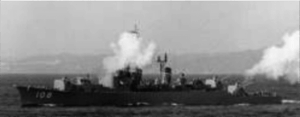 JDS Yudachi, DD-108, ASU-7007 was the second in the Murasame-class and the world “Yuudachi” was the third use, after a Kamikaze-class an Shiratsuyu-class.
JDS Yudachi, DD-108, ASU-7007 was the second in the Murasame-class and the world “Yuudachi” was the third use, after a Kamikaze-class an Shiratsuyu-class.
She was laid down on December 16, 1957 at Ishikawajima Heavy Industries, No. 2 Factory as the “1,800-ton patrol ship No. 1607, Showa 31 Plan”. She was launched on July 29, 1958, and commissioned on March 25, 1959, joining the 10th Escort Division, newly formed under the Maizuru District Force with her sister Murasame.
On September 25, 1959, her unit was reorganized under the 1st Escort Group. On February 1, 1961, her unit was reorganized again under the 2nd Escort Group, under the Self-Defense Fleet.
In 1962, her sonar was modernized. In 1965 and 1967, she took part in long training cruises aboard.
On March 15, 1969, the 10th Escort Squadron ended under the 3rd Escort Group. And in 1974, her sonar was modernized again.
On March 30, 1984, her unit was disbanded and without any, she was reclassified as a “special service ship” available for any existing unit, registred ASU-7007. She was incorporated into the Maizuru District Force as direct-command ship until struck on March 24, 1987. She was sold to Yamaji Sangyo, Okayama, dismantled in November.
 JDS Harusame DD-109
JDS Harusame DD-109
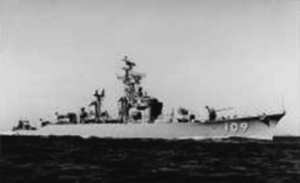 JDS Harusame, DD-109, ASU-7008 was the last in class built for the Japan Maritime Self-Defense Force, third, and her name was still in the poetic tradition as the “rain falling quietly in spring” third Japanese to bear it following the former IJN Harusame-class Harusame and Shiratsuyu-class Harusame.
JDS Harusame, DD-109, ASU-7008 was the last in class built for the Japan Maritime Self-Defense Force, third, and her name was still in the poetic tradition as the “rain falling quietly in spring” third Japanese to bear it following the former IJN Harusame-class Harusame and Shiratsuyu-class Harusame.
She was laid down on June 17, 1958 at Uraga Dock as the “1,800-ton patrol ship No. 1609, Showa 32 Plan”. She was launched on June 18, 1959, commissioned on December 15, 1959, and joined the Maizuru District Force. On January 16, 1960, she entered the 10th Escort Division, 1st Escort Group.
On February 1, 1961, her unit was reorganized under the 2nd Escort Group, Self-Defense Fleet.
The JMSDF started testing new domestically produced fire control systems FY1959, so a prototype was installed first on Harusame. In 1965, the Mk.63 and Mk.57 fire control systems on the bridge were removed and replaced with the Japanese prototype fire control system. After technical and practical tests, the Type 68 Fire Control System (GFCS-0) was officially adopted that year.
In March 1967, the depth charge launch track and depth charge projector at the stern were removed, instead a VDS (variable depth sonar) was installed.
In 1968, she made her longest oceanic trip, visiting many foreign countries in Southeast Asia and Pacific. On March 15, 1969, the 10th Escort Squadron was transferred to the 3rd Escort Group.
Between August 1 and September 14, 1979, her anti-submarine armament was replaced with short-range torpedo launcher removed, Type 68 triple 324 mm installed instead.
On March 30, 1984, the 10th Escort Squadron was disbanded, she was incorporated into the 3rd Escort Group as direct-command ship.
ON March 5, 1985, she was reclassified as “special service ship” naval registration ASU-7008. She joined the 1st Submarine Group as direct-command ship, home ported to Kure. Her mission was to support submarine training, with her stern VDS removed, torpedo retrieval equipment added.
On May 31, 1989, she was struck. Over her 29-year service she travelled 660,000 nautical miles, 30x Earth round.
Read More/Src
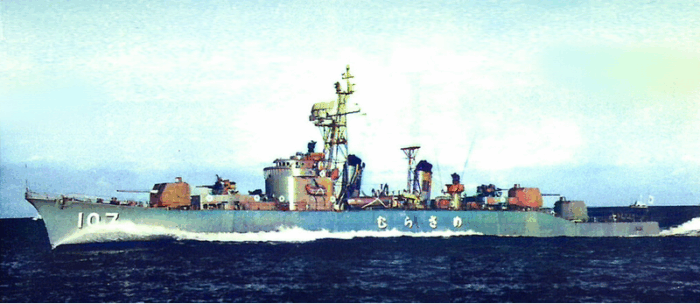
Books
Abe, Yasuo, “History of the Japan Maritime Self-Defense Force’s Escort Ships 1953-2000,” Ships of the World, No. 571, Kaijinsha, July 2000
Abe, Yasuo, “Technical Features of Escort Ships – 2. Propulsion Systems,” Ships of the World, No. 742, Kaijinsha, June 2011
Ishibashi, Takao, “Hull (Development of Japanese Destroyers from a Technical Perspective),” Ships of the World, No. 453, Kaijinsha, February 1994
Katsuyama, Taku, “Old Sailor’s Memories, Part 4: Have You Gone?” Ships of the World, No. 688, Kaijinsha, April 2008
Koda, Yoji, “The History of Domestically Produced Escort Ship Construction,” Ships of the World, No. 827, Kaijinsha, December 2015
Sakata, Hideo, “The History of the Maritime Self-Defense Force FCS,” Ships of the World, No. 493, Kaijinsha, March 1995
Tada, Tomohiko, “4. Radar/Electronic Warfare Equipment (Japan Maritime Self-Defense Force’s Shipboard Weapons 1952-2010),” Ships of the World, No. 721, Kaijinsha, March 2010.
Gardiner, Robert; Chumbley, Stephen (1995). Conway’s All The World’s Fighting Ships 1947–1995.
Kaijinsha, ed., “Japan’s Destroyers (Postwar Edition),” Ships of the World, no. 742, Kaijinsha, pp. 91-135, June 2011.
Otsuka Yoshifuru, “Technical Features of the JMSDF General-Purpose Escort Ship,” Ships of the World, No. 997, Kaijinsha July 2023.
Koda Yoji, “The Progress of Domestic Escort Ship Construction,” Ships of the World, No. 827, Kaijinsha, December 2015.
Sakata Hideo, “The Progress of the JMSDF FCS,” Ships of the World, No. 493, Kaijinsha, pp. 70-75, March 1995.
Sekigawa Takeshi, “Evolution of Underwater Attack Control Systems,” Volume 4, Torpedoes, Suikokai, “The JMSDF’s Painstaking Footprints,” 2013,
Tomohiko Tada, “4. Radar/Electronic Warfare Equipment (MSDF Shipboard Weapons 1952-2010),” No. 721, Kaijinsha, pp. 100-105, March 2010.
Eiichi Yoshihara, “Hull (History of MSDF Escort Ships 1953-2000) — (Technical Features of MSDF Escort Ships),” No. 571, Kaijinsha July 2000
Links
web.archive.org/ navypedia.org murasame.htm
en.wikipedia.org/ Murasame-class_destroyer
ja.wikipedia.org
seaforces.org/ Murasame-1959-class
Model Kits
JMSDF Defender DD-107 Murasame (1st) (w/Resin Bottom) (Plastic model)

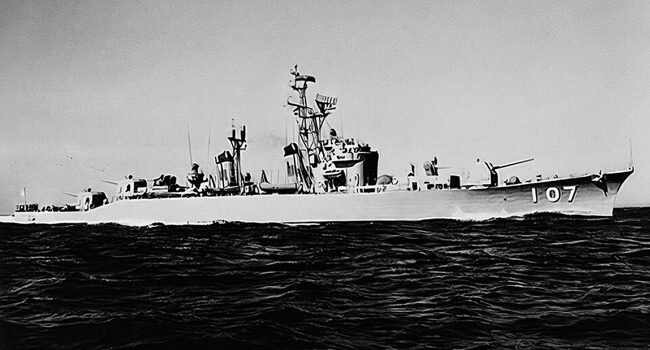
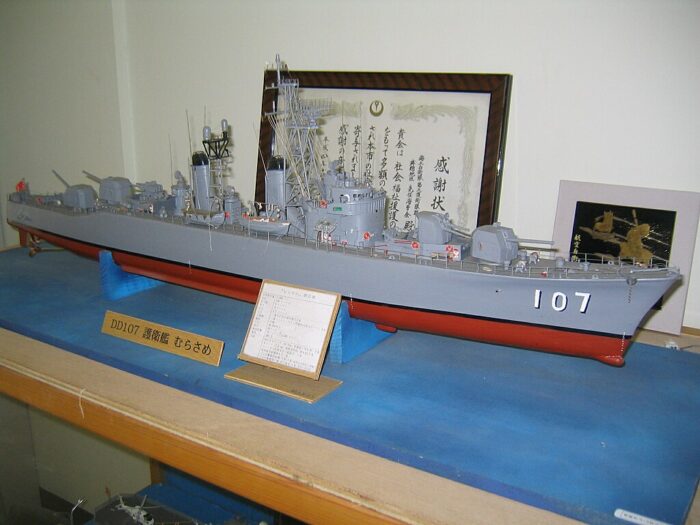
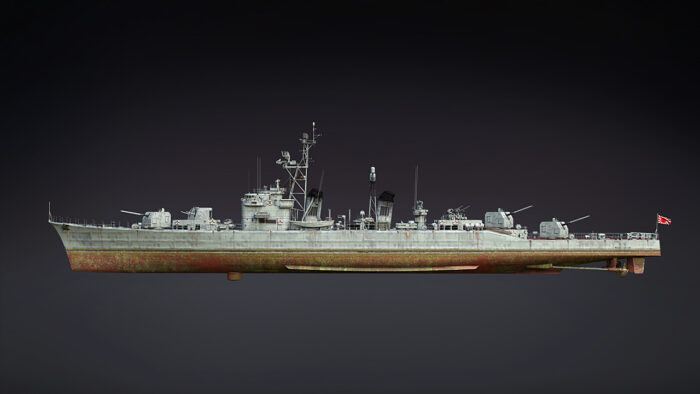
 Latest Facebook Entry -
Latest Facebook Entry -  X(Tweeter) Naval Encyclopedia's deck archive
X(Tweeter) Naval Encyclopedia's deck archive Instagram (@navalencyc)
Instagram (@navalencyc)





 French Navy
French Navy Royal Navy
Royal Navy Russian Navy
Russian Navy Armada Espanola
Armada Espanola Austrian Navy
Austrian Navy K.u.K. Kriegsmarine
K.u.K. Kriegsmarine Dansk Marine
Dansk Marine Nautiko Hellenon
Nautiko Hellenon Koninklije Marine 1870
Koninklije Marine 1870 Marinha do Brasil
Marinha do Brasil Osmanlı Donanması
Osmanlı Donanması Marina Do Peru
Marina Do Peru Marinha do Portugal
Marinha do Portugal Regia Marina 1870
Regia Marina 1870 Nihhon Kaigun 1870
Nihhon Kaigun 1870 Preußische Marine 1870
Preußische Marine 1870 Russkiy Flot 1870
Russkiy Flot 1870 Svenska marinen
Svenska marinen Søværnet
Søværnet Union Navy
Union Navy Confederate Navy
Confederate Navy Armada de Argentina
Armada de Argentina Imperial Chinese Navy
Imperial Chinese Navy Marinha do Portugal
Marinha do Portugal Mexico
Mexico Kaiserliche Marine
Kaiserliche Marine 1898 US Navy
1898 US Navy Sovietskiy Flot
Sovietskiy Flot Royal Canadian Navy
Royal Canadian Navy Royal Australian Navy
Royal Australian Navy RNZN Fleet
RNZN Fleet Chinese Navy 1937
Chinese Navy 1937 Kriegsmarine
Kriegsmarine Chilean Navy
Chilean Navy Danish Navy
Danish Navy Finnish Navy
Finnish Navy Hellenic Navy
Hellenic Navy Polish Navy
Polish Navy Romanian Navy
Romanian Navy Turkish Navy
Turkish Navy Royal Yugoslav Navy
Royal Yugoslav Navy Royal Thai Navy
Royal Thai Navy Minor Navies
Minor Navies Albania
Albania Austria
Austria Belgium
Belgium Columbia
Columbia Costa Rica
Costa Rica Cuba
Cuba Czechoslovakia
Czechoslovakia Dominican Republic
Dominican Republic Haiti
Haiti Hungary
Hungary Honduras
Honduras Estonia
Estonia Iceland
Iceland Eire
Eire Equador
Equador Iran
Iran Iraq
Iraq Latvia
Latvia Liberia
Liberia Lithuania
Lithuania Mandchukuo
Mandchukuo Morocco
Morocco Nicaragua
Nicaragua Persia
Persia San Salvador
San Salvador Sarawak
Sarawak Uruguay
Uruguay Venezuela
Venezuela Zanzibar
Zanzibar Warsaw Pact Navies
Warsaw Pact Navies Bulgaria
Bulgaria Hungary
Hungary

 Bundesmarine
Bundesmarine Dutch Navy
Dutch Navy Hellenic Navy
Hellenic Navy Marina Militare
Marina Militare Yugoslav Navy
Yugoslav Navy Chinese Navy
Chinese Navy Indian Navy
Indian Navy Indonesian Navy
Indonesian Navy JMSDF
JMSDF North Korean Navy
North Korean Navy Pakistani Navy
Pakistani Navy Philippines Navy
Philippines Navy ROKN
ROKN Rep. of Singapore Navy
Rep. of Singapore Navy Taiwanese Navy
Taiwanese Navy IDF Navy
IDF Navy Saudi Navy
Saudi Navy Royal New Zealand Navy
Royal New Zealand Navy Egyptian Navy
Egyptian Navy South African Navy
South African Navy






























 Ukrainian Navy
Ukrainian Navy dbodesign
dbodesign